The Yorkshire artist who spent 10 years going undercover at arms fairs
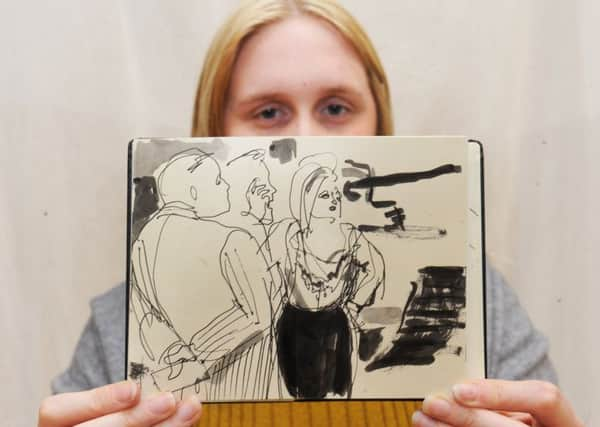

The sweets bearing the words ‘Welcome to Hell’ might well be the most unlikely complimentary gift ever to have been handed out at an arms fair, but the competition is stiff. There are stress balls shaped like hand grenades, others which look like mini-bombs and a little squishy rubber bulldozer given away by a company whose equipment has been used to demolish hundreds of homes in Occupied Palestine.
All have been collected by Yorkshire artist Jill Gibbon, who for the last 10 years has been going undercover at the trade events where they flog everything from missiles to CS gas canisters to witness the international arms industry close up.
Advertisement
Hide AdAdvertisement
Hide AdOver the course of that decade, Gibbon has been to more than a dozen events and talks of the delegate she saw being sick in the corner of the room, the result of a combination of nerves and free booze, of the string quartet who played Mozart on the back of a military truck and how she has watched the sale of high grade weapons with the potential to kill thousands of innocent civilians at a stroke completely normalised.
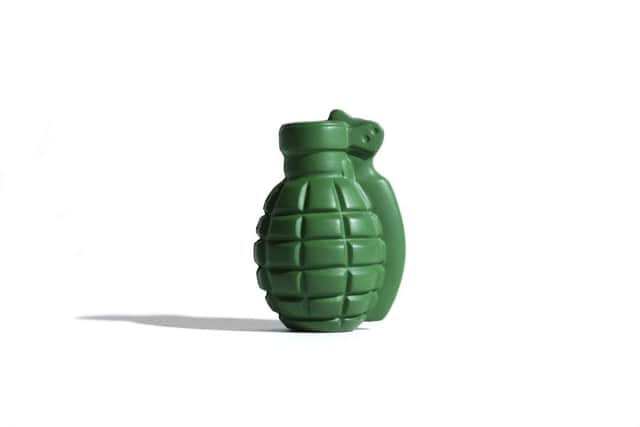

“My practice has always been about activism and protest,” says Gibbon, who is a senior lecturer in the school of art, architecture and design at Leeds Beckett University. “For a long time I would join the demonstrations outside the arms fairs, but I was always intrigued about what was going on inside.
“I was also frustrated by the tradition of war art, which almost exclusively concentrates on the conflict zone. It’s as though war is something that spontaneously happens. It doesn’t. The arms industry is a business and I really wanted to expose the origins of conflict.”
In 2007, Gibbon decided to chance her luck and apply for accreditation to that year’s Defence and Security Equipment International fair in London. When it came to the section for occupation, she opted to bend the truth a little. Her title she said was ‘official war artist’ and she explained that she was particularly keen to practice drawing tanks.
Advertisement
Hide AdAdvertisement
Hide Ad“No one was more surprised than me when it worked,” she says. “But I was more astonished by what I found when I got inside. I suppose I thought it would all be quiet subtle. I imagined the deals would be negotiated in anonymous meeting rooms and if there were weapons on show it would be done discreetly. Actually it was the complete opposite.”
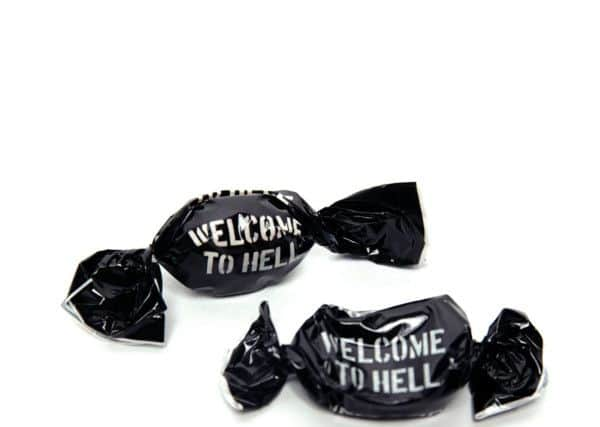

Gibbon was confronted with beautifully lit military equipment, girls in short skirts with trays of Champagne and an atmosphere more reminiscent of a high end car show than an arms fair.
“Then I saw the complimentary gifts,” she says. “First were the stress balls, but those free sweets were the most chilling of all. They were from a company which has made millions from selling fighter jets used in the ongoing war in Yemen where an unknown number of ordinary people have been killed and many more left homeless.
“I’m not sure who thought it was a good idea, but they weren’t alone. I left that first fair shocked at just how much war was being sexualised and trivialised.”
Advertisement
Hide AdAdvertisement
Hide AdJill has been to countless other fairs since then and each time she also gets out her sketchbook, not to draw the military equipment as she suggested on her application, but the security experts, government ministers and civil servants hoping to broker a deal.
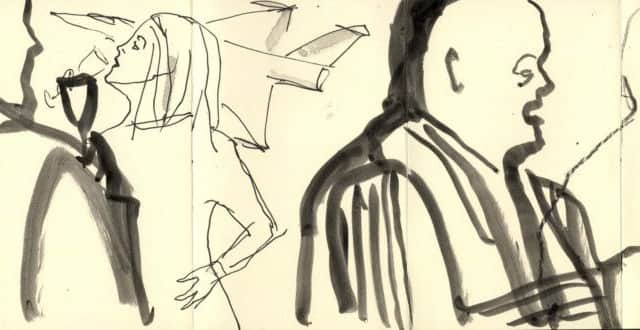

“My official war artist status got me into a couple of fairs, but when that no longer cut it I had to go down a different route,” says Gibbon. “I set up a company. As to what it does, I have left it vague. I didn’t want to tell an absolute lie and it worked.”
Under her new guise, Gibbon swapped her usual clothes for a demure suit and a string of pearls in order to blend in with the other sharp suited delegates. It means even when she brings out that sketchbook she usually attracts very little attention.
“At the fairs in Paris and London, by the afternoon most people have drunk so much free drink that they are oblivious to what else is going on around them,” she adds. “In Abu Dhabi it’s different and I have occasionally had the odd security guard ask me what I’m doing. I try not get into a conversation with people, but if they ask I tell them that I’m just taking notes. One time the guy said, ‘That doesn’t look like notes’, but for the most part I have been left alone.”
Advertisement
Hide AdAdvertisement
Hide AdGibbon’s sketchbooks, along with the stress toys and those sweets are about to on display at the Peace Museum in Bradford as part of the Etiquette of the Arms Trade exhibition.
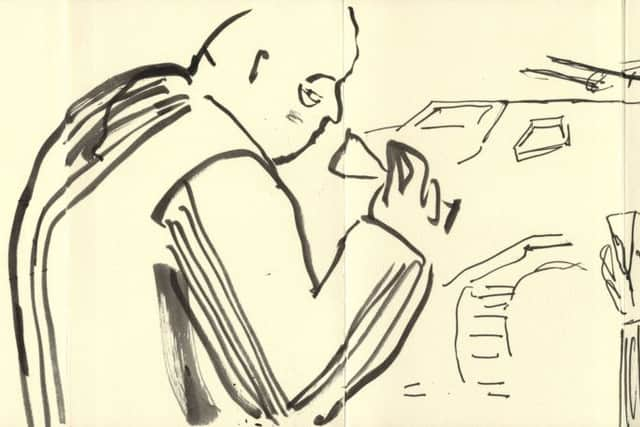

“When I put on the suit and those pearls I view it as a performance and what I noticed is that everyone else there seems to be acting a part too,” she says. “What they are doing is not normal, but there is a pretence of respectability.
“I remember at one event overhearing one man say to another, ‘You can’t do this job unless you have a drink’. He was right, despite the air of normality there is a real sense of unease and that’s where the title of the show came from. I wanted to puncture that charade and give people a glimpse beneath the surface.”
While one arms fair is very much like another, Gibbon, who understandly want to keep her identity secret, says there has been a definite shift in emphasis since the Arab Spring of 2010 which sparked a saw a series of pro-democracy uprisings.
Advertisement
Hide AdAdvertisement
Hide Ad“Suddenly there was a real push for what the industry likes to call ‘less lethal weapons’. It’s a nonsense and I want to show people the hypocrisy. Western governments might publicly express their support for these democratic uprisings, yet behind the scenes they are selling the equipment to suppress them, they are the ones supplying the CS gas and the armed vehicles.”
The exhibition will open tomorrow with a performance by the Commoners Choir. Led by former Chumbawumba member Boff Whalley, the Leeds group were one of the first to refuse to take part in this summer’s Great Exhibition of the North as long as BAE Systems was a sponsor. The subsequent petition, started by Gibbon, attracted the support of numerous arts organisations and the defence company did ultimately step away.
It was a small victory, but for Gibbon, whose political education began at the Greenham Common protests against nuclear weapons in the 1980s, there is more to do.


“When I started this project I assumed that there would be a natural end, but there isn’t,” she says. “I have always wanted my attention to draw attention to things hidden from the public gaze. It’s about making people aware of how the business of war is conducted and I don’t feel that I can walk away.”
The Etiquette of the Arms Trade: 10 Years Drawing in Arms Fairs, Bradford Peace Museum, April 13 to June 28.